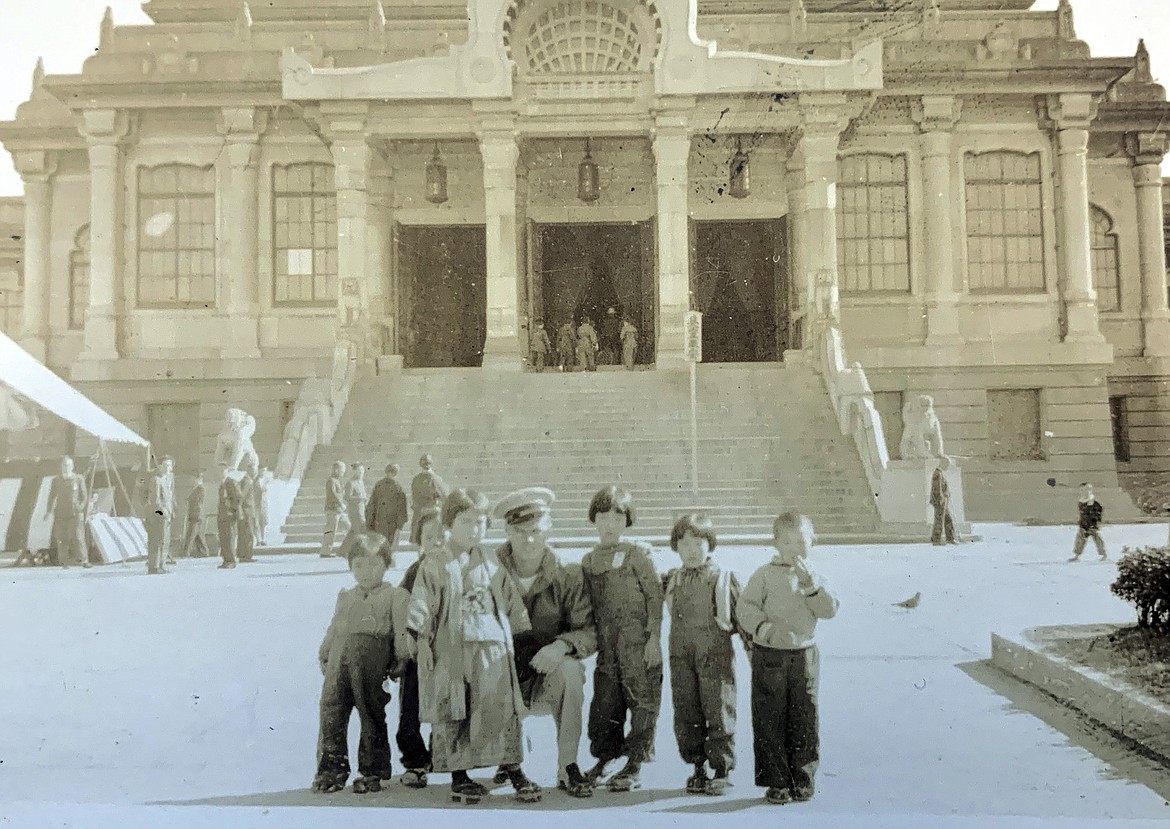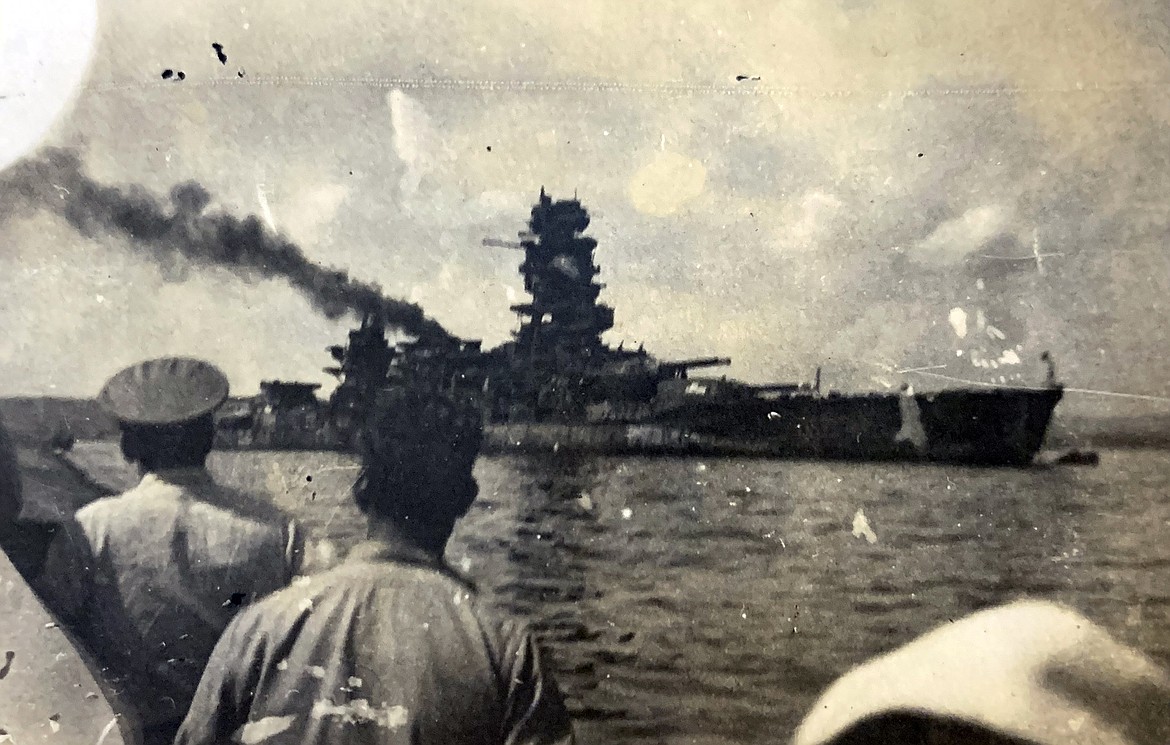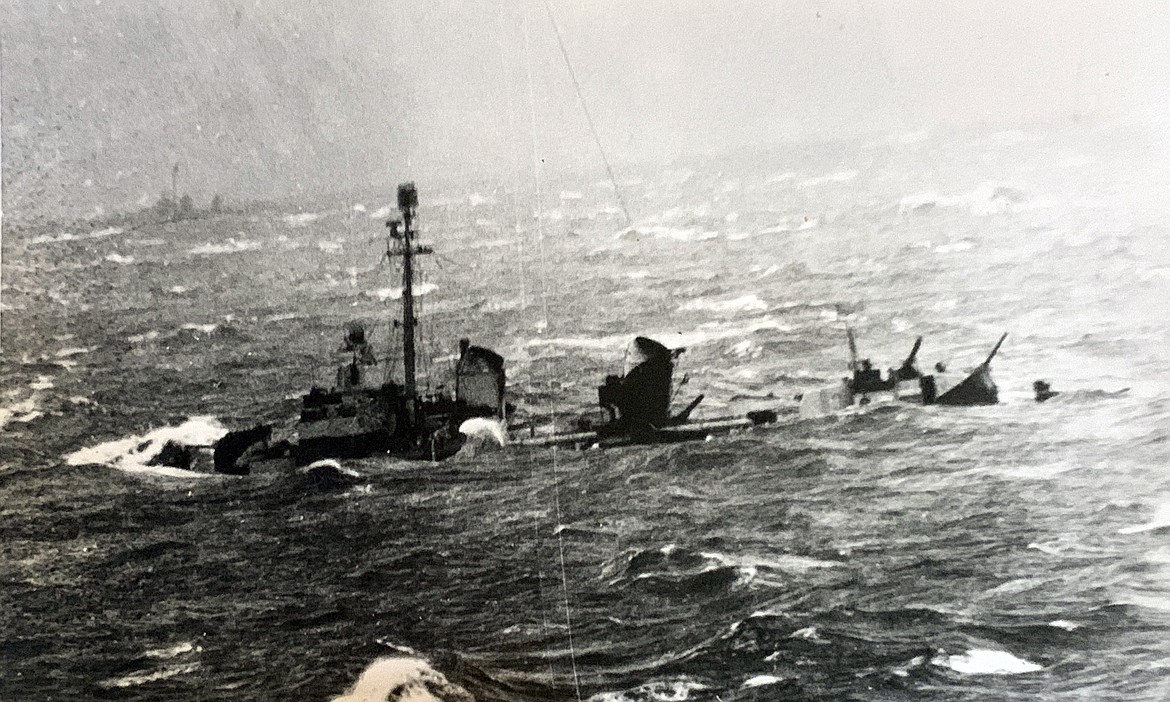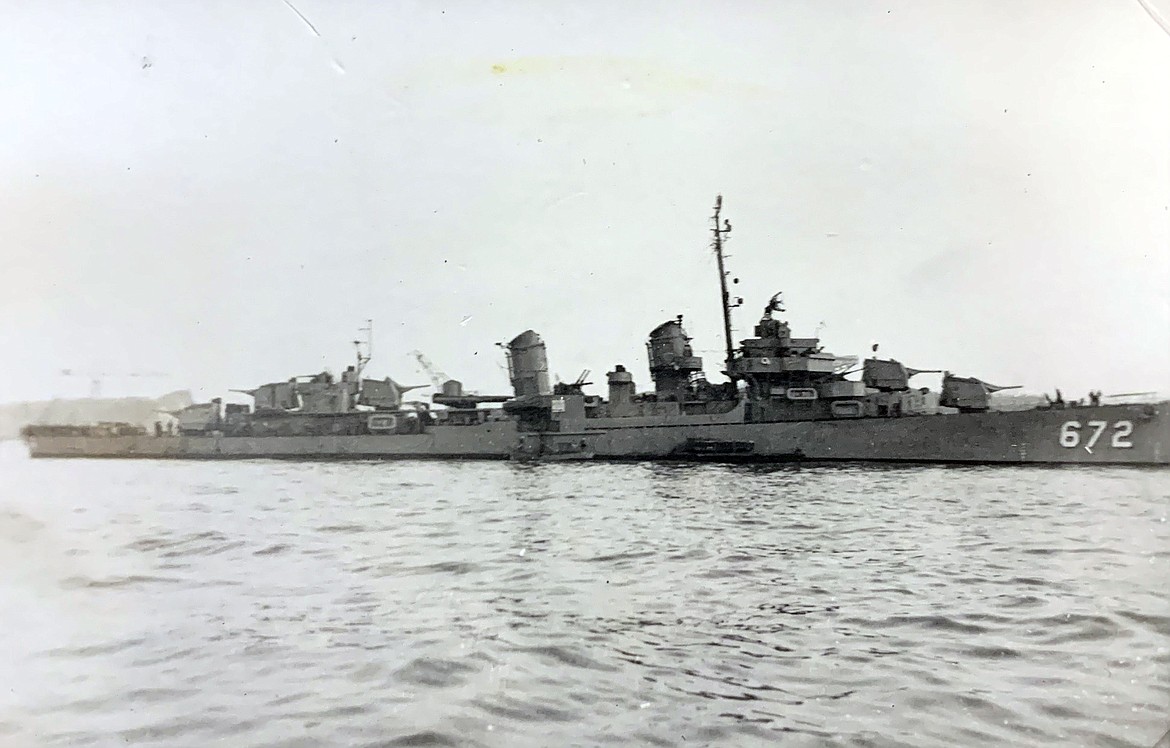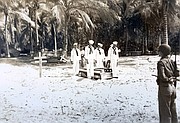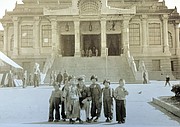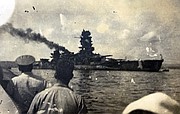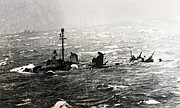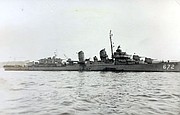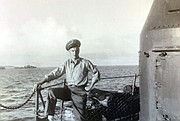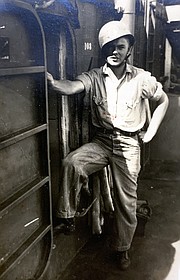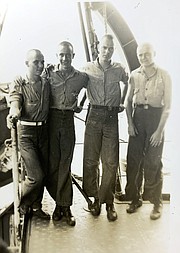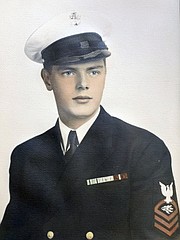Kalispell veteran recalls service on destroyer U.S.S. Healy
At age 99, Arnold Peterson of Kalispell has seen a lot, but nothing compares to his days aboard the destroyer U.S.S. Healy in the Pacific during the height of World War II.
Born in Maplewood, New Jersey, Peterson, or “Pete” as he would come to be known to his shipmates, took an early interest in radio communications.
At age 14, Peterson purchased his first ham radio and soon acquired an amateur radio operator’s license with the callsign W2LKH.
By age 19, after attending Newark College of Engineering for a year and with World War II looming, Peterson made the decision to enlist in the Navy before he could be drafted. His decision came after his father, who had served in the trenches during World War I, reminded him that ‘In the Navy, at least you always have a bed to sleep on.’”
Peterson’s background in radio served him well.
“As an amateur radio operator, I already had an idea how the equipment worked, so the Navy gave me a test and assigned me to the radio school in Washington, D.C.,” Peterson recalled.
Because of a high score on the naval entrance exam, his radio experience and his year of college, Peterson entered the Navy as a Petty Officer Third Class, moved up to Second Class after graduating from radio mechanic’s school and boarded the newly commissioned U.S.S. Healy as a Petty Officer First Class in September 1943.
The chief — and only — electronics technician aboard a class of ship allocated for three, Peterson had to be prepared to deal with any situation, day or night.
“I operated 24 hours a day. When something went wrong, I was the one they called and I had to try to fix it,” he said. “I always had to do it myself because there was no one else to call. It was a big responsibility, but I was able to do a pretty good job.”
AFTER COMPLETING a shakedown cruise off Bermuda, the Healy headed to the Pacific. After transiting the Panama Canal during Thanksgiving, arrived in San Francisco before proceeding to Pearl Harbor.
After several weeks training in Hawaiian waters with carrier Yorktown and other ships that would become the famous Task Force 58 under Vice Admiral Marc Mitscher, the Healy assisted in the capture of the Marshall Islands.
The Healy's next major operation was the neutralization of Truk, a major Japanese naval base in the Pacific.
After the raid, Healy steamed to the Marianas, fought off several air attacks and helped deliver important strikes against Saipan, Tinian, and Guam.
After a period of intensive training and preparation, the Healy departed for the invasion of the Marianas on June 6, 1944, headed for a spectacular amphibious operation that would be carried out nearly 1,000 miles from the nearest advance base.
Again acting as a screening ship for the carriers, Healy supported softening-up raids as Admiral Richmond Kelly Turner's Marines went ashore on Saipan on June 15, 1944.
JUST FOUR days later, the Healy was involved in the largest carrier battle in history, the Battle of the Philippine Sea.
Continuing to cruise with Task Force 58, the Healy was involved in several engagements before being detached to join a carrier task group for direct support of the Peleliu invasion in mid-September 1944 and later helped launch strikes against Okinawa and Formosa.
Japanese forces retaliated against the attacks with heavy and repeated land-based air attacks. Healy brought down one bomber and assisted in downing many more during these attacks, in which the battleships Canberra and Houston were damaged.
“We pulled one of those downed Japanese pilots out of the water after we shot him down, hoping to get some information from him,” Peterson remembered. “Every time the rescue boat would get close, he would swim as hard as he could the other way. He didn’t want to be saved. We eventually captured him, but he died before we could get any intel from him.”
As troops stormed ashore at Leyte for the historic return to the Philippines, Healy and her carrier group began direct support of the operation, blasting airfields on southern Luzon before participating in Battle for Leyte Gulf, which left the Japanese fleet decimated.
Next, the Healy rode out Halsey’s Typhoon, a terrible storm that sank three ships. It was an experience Peterson will never forget.
“That was a terrible storm and, unfortunately, we didn’t have full ballast because we had to cut off in the middle of fueling,” Peterson said. “Because we didn’t have full ballast, our ship ended up tipping 60 degrees with everything sliding all over the place. We were just fortunate that we had just enough ballast to not tip and end up on the bottom of the ocean.”
THE HEALY next was assigned to the battleships designated to bombard Iwo Jima, and remained off the island patrolling and screening for most of March 1945. After some time in Guam, the destroyer was en route from there to Iwo Jima when news arrived that the war was over. Healy steamed off Japan with Missouri and other units preparatory to the formal surrender, then acted as harbor control vessel at Tokyo Bay until after the ceremonies.
“We were a bit concerned about going into Tokyo Bay,” Peterson recalled. “We thought it might have been a trap, but the Japanese were ready to quit after all.”
After patrolling the waters around Tokyo for a short time, Peterson and his shipmates were allowed ashore, where they toured a warehouse and were allowed to grab a few souvenirs.
“I grabbed some electronic equipment and a rifle,” Peterson said. “But the captain outdid us all. He commandeered a tugboat and had it pulled along behind the Healy all the way back to the states.”
Despite his extended time in combat situations, Peterson came away from the war with little more than a few bumps and bruises. While he says he doesn’t really remember too much about the battles his ship fought in, he does remember the boredom between engagements.
“The hardest part of being out there was the monotony of it all,” Peterson said. “It wasn’t always fighting, it was a lot of doing the same things over and over day after day. I had a few close calls, though. I got called out to work in some storms and even got hit in the head by the rotating antenna on the top of the mast once.”
Along the way, Peterson was promoted to Chief Petty Officer, earning him private quarters in the bow of the ship. Unfortunately, the location of the quarters meant that every time the ship went over a large wave, he would feel it as the ship slammed back down into the ocean.
“It was my own bunk,” he said. “It wasn’t in the best part of the ship, that’s for sure, but it was mine.”
After the war, Peterson returned home, finished college and met his future wife, Lois. The couple went on to have two daughters and remained married for 69 years, until Lois’ death earlier this year.
Looking back on his time in the Pacific during 1944 and 1945, Peterson said he and his fellow shipmates simply did what they had to do.
“I never regretted one minute of it while I was in the Navy, not one minute,” Peterson said. “To me, it was a challenge. I never once thought that I might not make it back. I just went into it head-first and didn’t think about anything else but doing my job.”
Reporter Jeremy Weber may be reached at 406-758-4446 or jweber@dailyinterlake.com.




